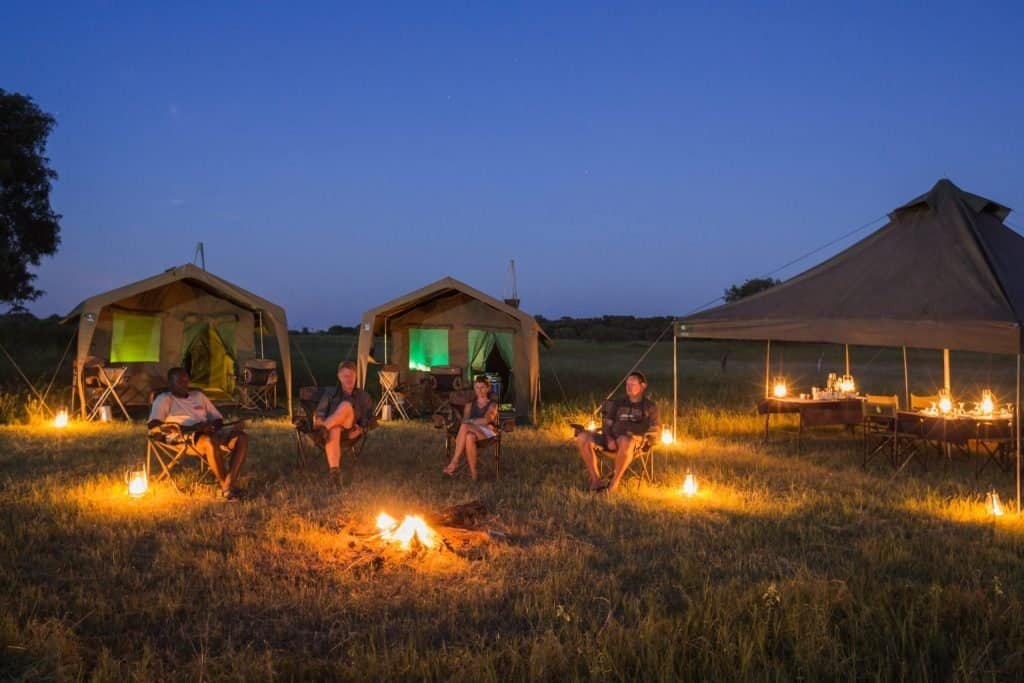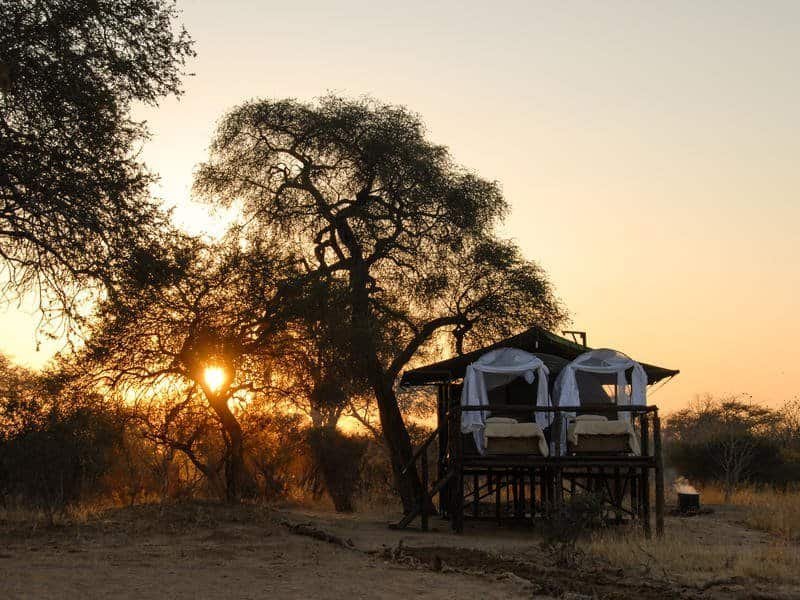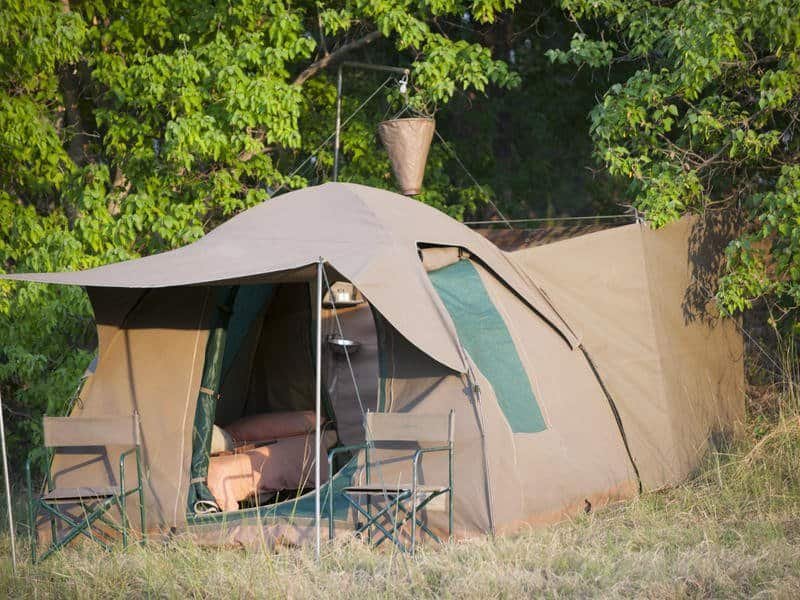African safaris offer a once-in-a-lifetime opportunity to immerse oneself in the breathtaking wilderness and encounter iconic wildlife up close. An integral part of this unforgettable experience is the accommodation, which can range from luxurious lodges to intimate tented camps. Each type of safari accommodation offers a unique blend of comfort, adventure, and proximity to nature, catering to different preferences and budgets.
In this article, I’ll explore the main types of safari accommodations, including safari lodges, tented camps, mobile camps, and sleep-out decks. By delving into the unique features, advantages, and considerations of each option, I aim to help you make an informed decision when planning your African safari adventure. Whether you dream of indulging in luxury or yearn for a more authentic and immersive bush experience, understanding the different accommodation options is key to crafting your perfect safari itinerary.
But before we go any further, we need to address the elephant in the room (sorry, but how could I resist?). That elephant is the term “luxury”. When they hear this term, most people probably think of ultra-high end hotels where room comes with designer furniture, chandeliers, gold fittings in the bathroom and a pillow menu, for starters. Or is that just me?
What luxury is
Yet on safari, the real luxury is the exclusivity of the experience – smaller camps with fewer guests, where you can go on game drives and walking safaris and rarely – if ever – see other vehicles. Luxury is learning from the best guides and exploring the best locations. Luxury is falling asleep and waking up to the sounds of the African bush. Luxury is having all the comforts and ameneties you need without the stuff you don’t.
The further removed you are from the wilderness experience, the less luxurious the accommodation.
What luxury isn’t
Sleeping behind concrete walls with glass windows and doors and an air-conditioner noisily pumping out cold air is about as far away as you can get from the real wild Africa. If you want an example of how not to do it, you can have a look at the Four Seasons “Safari Lodge” in the Serengeti. I had the misfortune of spending a night there on a familiarisation trip which meant I didn’t pay for it and I certainly would not have chosen to stay there otherwise. Yes, it is what it says on the tin – an American hotel in the middle of the Serengeti.
There are cameras filming the waterhole so you can stay in bed in your acclimatised room safe from hearing anything outside, munching on a canape while watching the occasional elephant drink from the waterhole a few hundred metres away. On your in-room television.
Honestly, it was the most surreal time I have ever had in Africa, which is saying something.
My definitions
So now you know how I define luxury, you will understand that ALL of the accommodation you will find in my itineraries is luxurious, but there are still differences and I have set these out below. If for some reason I do mention one of the over-the-top places that I don’t recommend, I will use the term “excessive“.
Safari Lodges

Safari lodges are permanent structures that offer a more conventional experience in the heart of the African wilderness. These lodges typically feature solid buildings made from materials such as stone, wood, and thatch, blending seamlessly with their natural surroundings.
One of the main advantages of staying in a safari lodge is the level of comfort and amenities they provide. Most lodges offer spacious, well-appointed rooms or suites with en-suite bathrooms – often with an outdoor shower, an experience not to be missed – electricity and running hot and cold water. Guests can expect comfortable beds, high-quality linens, and stylish decor that often incorporates elements of local design and craftsmanship.
In addition to the luxurious accommodations, safari lodges usually boast an array of facilities and services. These may include restaurants serving gourmet cuisine, bars and lounges, swimming pools, spas and gift shops. Some high-end lodges even offer extras like private plunge pools and butler service.
However, the luxury and convenience of safari lodges come with a few potential drawbacks. Due to their permanent nature and more substantial infrastructure, lodges may feel less immersive and closer to nature than other accommodation options. Additionally, the higher level of comfort and amenities often translates to a heftier price tag.
Some examples of safari lodges: Gorges Lodge, Zimbabwe, Mihingo Lodge, Uganda, Ruaha River Lodge, Tanzania
Tented Camps

Tented camps offer a more immersive and authentic safari experience, allowing guests to feel closer to nature without sacrificing comfort. These camps feature semi-permanent structures with canvas walls and thatched or canvas roofs, often set on raised platforms.
One of the main draws of tented camps is the opportunity to enjoy the sights, sounds, and smells of the African bush from the comfort of your own private sanctuary Falling asleep to the distant roar of lions or the gentle rustling of leaves and waking up to the dawn chorus of birdsong creates an unforgettable connection with the wilderness.
Tented camps come in various forms, from more rustic, eco-friendly options to ultra-luxurious, glamping-style accommodations. Luxury tented camps often feature spacious, well-appointed tents with en-suite bathrooms, comfortable beds, and stylish furnishings. Some even offer additional amenities like private plunge pools and other extras more akin to safari lodges.
One advantage of tented camps is that they are more environmentally friendly than permanent lodges, as they have a smaller footprint and can be dismantled with minimal impact on the surroundings. This makes them a popular choice in more remote or ecologically sensitive areas.
However, staying in a tented camp may not be for everyone. Some guests may feel less secure sleeping under canvas, and the proximity to wildlife can be both thrilling and intimidating. Tented camps may also have more limited facilities and services compared to lodges.
I can’t imagine these being any issues that would put off a Grown-up Traveller, but am here to answer questions and dispel fears.
Some examples of tented camps: Bomani Tented Lodge, Zimbabwe, Porini Giraffe Camp, Kenya, Mwaleshi Camp, Zambia
Mobile Camps

Mobile camps are the ultimate choice for safari-goers seeking a truly immersive and authentic bush experience. These camps are designed to move with the seasons and the wildlife, ensuring that guests are always in the heart of the action.
The key feature of mobile camps is their mobility. They are set up in remote locations for a few weeks at a time, then packed up and moved to follow the wildlife migrations or to explore different areas of the park or reserve. This allows guests to witness incredible natural spectacles, such as the Great Wildebeest Migration in the Serengeti, from a prime vantage point.
Mobile camps can vary in style and luxury level, from basic, expedition-style setups to more luxurious, glamping-style accommodations. The tents are typically smaller and more basic than those in permanent tented camps, but they still offer comfortable beds, high-quality linens, and often en-suite bathrooms with bucket showers.
One of the main advantages of mobile camps is the sense of exclusivity and remoteness they offer. Guests can enjoy a truly private and intimate safari experience, far from the crowds and surrounded by untouched wilderness. The camps’ mobility also allows for a greater variety of landscapes and wildlife sightings.
However, the remote locations and constant movement of mobile camps also come with some limitations. Facilities and amenities may be more basic, and some0 camps rely on generators for power, which may only be available at certain times. The intimate nature of mobile camps also means that space is limited, and they may not be suitable for larger groups or families.
Example of a mobile camp: Bush Ways Khwai, Botswana
Sleep-Out Decks and Star Beds

For a truly unforgettable and immersive safari experience, some camps and lodges offer sleep-out decks or star beds. These unique accommodations allow guests to spend the night under the vast African sky, surrounded by the sounds of the wilderness.
Sleep-out decks are typically raised platforms or treehouse-style structures located a short distance from the main camp or lodge. They are equipped with comfortable beds, mosquito nets, and sometimes even en-suite bathrooms, offering a blend of comfort and adventure.
Example of a sleep-out: Flatdogs Camp, Zambia
Star beds, on the other hand, are often more minimalist in design. They usually consist of a luxurious bed set up on an open-air platform or even directly on the ground, allowing for an unobstructed view of the starry night sky.
Example of a star bed: Namib Dune Star Camp
The main advantage of sleep-out decks and star beds is the opportunity to fully immerse oneself in the African wilderness. Falling asleep under a canopy of stars, with the sounds of nocturnal animals in the distance, creates a profound sense of connection with nature. These experiences can be incredibly romantic and are popular with honeymooners or couples seeking a unique and intimate getaway.
However, sleeping out in the open may not be for everyone. Some guests may feel vulnerable or uncomfortable being exposed to the elements and the potential presence of wildlife. Weather conditions can also impact the experience, as rain or strong winds may make it less enjoyable.
Fly Camps and Wilderness Camps

For the most adventurous and intrepid safari-goers, fly camps and wilderness camps offer a raw and authentic bush experience. These camps are set up in remote, untouched areas, far from the beaten path and often accessible only by foot or light aircraft.
Fly camps are typically very basic and minimalist, with small tents or mosquito nets set up for sleeping and a campfire for cooking and socializing. They are designed for short stays, usually one or two nights, as part of a walking safari or a multi-day expedition.
Wilderness camps, while slightly more permanent than fly camps, still offer a rustic and immersive experience. They usually consist of simple tents or structures with basic amenities, such as bucket showers and eco-toilets.
The main draw of fly camps and wilderness camps is the opportunity to explore remote and pristine wilderness areas, far from the crowds and infrastructure of more established camps. Guests can enjoy a true sense of solitude and connection with nature, often accompanied by expert guides who share their knowledge of the bush.
However, the basic nature of these camps means that comfort and amenities are limited. Guests must be prepared for a more rugged and hands-on safari experience.
Example of a fly camp: The Safari Series, Kenya
Factors to Consider When Choosing Safari Accommodation
When choosing your safari accommodation, there are several key factors to consider. First and foremost is the location and proximity to wildlife. Consider the type of animals you hope to see and choose a camp or lodge situated in an area known for those species.
Budget and level of luxury are also important considerations. Safari accommodations can range from basic and affordable to luxurious and expensive. Determine your budget and priorities in terms of comfort, amenities, and services.
Group size and travel style should also influence your decision. Some accommodations are better suited for couples or small groups, while others can cater to larger families or tour groups. Consider whether you prefer a more social atmosphere or a more intimate and private experience.
Finally, seasonal considerations and availability can impact your choice. Some camps and lodges may close during the low season or be fully booked during peak times. Be sure to plan ahead and check availability for your desired travel dates.
Closing thoughts

African safari accommodations offer a wide range of options to suit every traveler’s preferences, budget, and desired level of immersion in the wilderness. From luxurious lodges to authentic tented camps, mobile camps to sleep-out decks, each type of accommodation provides a unique and memorable experience.
When choosing your safari accommodation, consider factors such as location, budget, group size, desired amenities, and seasonal availability. By carefully selecting the right accommodation for your needs and preferences, you can ensure that your African safari adventure is truly unforgettable.
Whether you dream of falling asleep under a canopy of stars, waking up to the sound of elephants outside your tent, or indulging in five-star luxury in the heart of the bush, there is a perfect safari accommodation waiting for you. So start exploring the different options and get ready to embark on the adventure of a lifetime in the wilds of Africa.
